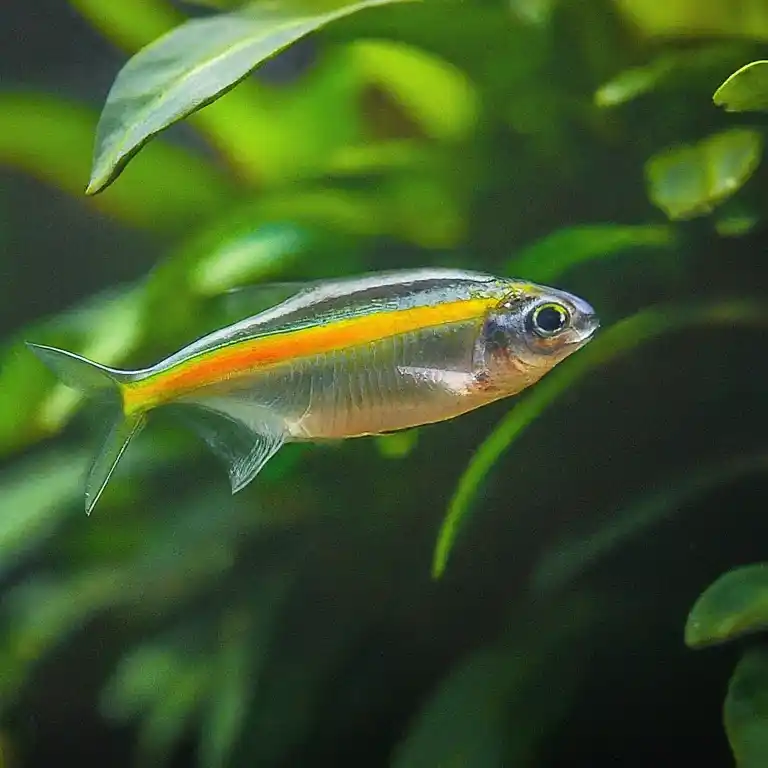The mangur fish is a type of freshwater catfish found in India, Bangladesh, and Southeast Asia.
It’s special because it can breathe air and live in waters with low oxygen levels.
People like it because it tastes really good, so it’s a common choice for meals in many homes.
Mangur Fish Price
The average mangur fish price ranges from Rs. 140/kg to Rs. 160/kg.
| City | Mangur Fish Price (per kg) |
| Delhi | ₹150 |
| Mumbai | ₹140 |
| Kolkata | ₹160 |
| Chennai | ₹155 |
| Bangalore | ₹145 |
| Hyderabad | ₹150 |
| Pune | ₹140 |
| Ahmedabad | ₹145 |
| Jaipur | ₹155 |
| Lucknow | ₹160 |
Mangur Fish Benefits
Mangur Machhali, also known as catfish, has several benefits.
Mangur Fish Benefits:
1. Rich in Protein: Just like other fish, mangur fish is packed with protein, which helps in building and repairing muscles.
2. Source of Omega-3 Fatty Acids: Omega-3 fatty acids are good for your heart and brain health, and mangur fish contains them too.
3. Provides Essential Nutrients: It’s a good source of vitamins and minerals like vitamin D, vitamin B12, and phosphorus, which are important for overall health.
4. Helps in Weight Management: Being a lean source of protein, mangur fish can help you feel full for longer, aiding in weight management.
5. Supports Heart Health: The omega-3 fatty acids in mangur fish can help lower the risk of heart disease by reducing inflammation and improving cholesterol levels.
6. Boosts Brain Function: Omega-3s are also beneficial for brain health, supporting cognitive function and potentially reducing the risk of age-related cognitive decline.
7. Promotes Eye Health: The omega-3 fatty acids in mangur fish are good for your eyes too, supporting vision health and reducing the risk of age-related macular degeneration.
What Does Magur Fish Eat?
Magur mach (fish) are omnivores, which means they eat a variety of foods.
Their diet typically includes:
1. Small Fish: Magur mach often feed on smaller fish like minnows, guppies, or other small aquatic creatures.
2. Insects and Worms: They also consume insects such as mosquitoes, larvae, worms, and other small invertebrates found in the water.
3. Plant Matter: While primarily carnivorous, magur mach may occasionally nibble on algae, aquatic plants, or other plant matter.
4. Commercial Feeds: In aquaculture settings, magur mach are sometimes fed commercial fish feeds specially formulated to meet their nutritional needs.
5. Organic Waste: Sometimes, they look for leftover food or trash in their surroundings.
Where is Magur Fish Found?
Magur fish can be found in various freshwater habitats across different parts of the world. They are native to regions such as Asia, Africa, Europe, and North America.
Specifically, magur fish are commonly found in:
1. Rivers and Streams: They inhabit freshwater rivers, streams, and creeks, where they can find suitable food and shelter.
2. Ponds and Lakes: Magur mach are often found in man-made or natural ponds and lakes with still or slow-moving water.
3. Marshes and Swamps: In some regions, magur mach inhabit marshes, swamps, and other wetland areas where they can thrive in shallow, muddy waters.
4. Reservoirs and Irrigation Canals: They may also be present in reservoirs, irrigation canals, and other artificial water bodies.
Why is Mangur Fish Banned in India?
Mangur fish isn’t banned in India, but there are rules about catching and selling some types of magur fish.
Here’s why it can get confusing:
1. State Fishing Bans
Some states like West Bengal, Odisha, and Andhra Pradesh have temporary bans or rules for catching gray and black mangur mach during breeding times to protect the fish.
But you can still eat it.
2. Export Regulations
Before, there were strict rules about the size of mangur fish exported from India to other countries.
Only fish over 30cm long could be exported. This made some people think that fish was banned, but the rules have become less strict.
3. Smuggling Concerns
Because mangur machhali is popular in nearby countries like Bangladesh and Nepal, there’s a big problem with illegal hunting and smuggling.
To stop this, there are tight rules about catching and selling the fish in areas near the borders.
4. Confusion Over Names
Sometimes people get confused about which fish are covered by the rules because different types of mullet might all be called “mangur machhali.”
This leads to misunderstandings about what’s banned.
Magur Fish Side Effects
Here are some possible magur fish side effects:
1. High Cholesterol
Magur has quite a bit of cholesterol because it’s an oily fish.
Eating too much might raise cholesterol levels, especially for people who already have high cholesterol.
2. Allergic Reactions
Some people can be allergic to magur mach.
Eating it could cause things like rashes, swelling, or even a serious allergic reaction called anaphylaxis.
3. Contamination Risks
Mangur machhali that live in polluted water can gather heavy metals like mercury and lead in their bodies.
Eating these fish often can be bad for your health.
4. Histamine Fish Poisoning
If magur fish aren’t stored properly after they’re caught, they can get contaminated by bacteria that make histamine.
Eating contaminated fish could cause problems like rashes, diarrhea, or vomiting.
5. Microplastic Ingestion
Magur fish sometimes eat tiny pieces of plastic while they’re swimming around.
These plastic bits can end up in the fish and then in people who eat them.
6. Fat Content
Eating a lot of big mangur fish meals can give you too many calories and fats, especially if you’re already at risk for obesity, high blood pressure, or heart disease.
It’s a good idea to control how much you eat.
What are the Diseases in Magur?
Magur fish, like other fish species, can be susceptible to various diseases.
Some common diseases that affect magur fish include:
1. Bacterial Infections
Bacterial infections are a significant concern in fish farming, including magur fish farming.
Diseases caused by bacteria such as Aeromonas hydrophila, Edwardsiella ictaluri, and Flavobacterium columnare can lead to symptoms like skin lesions, fin rot, and systemic infections.
2. Viral Diseases
Viral diseases like Viral Nervous Necrosis (VNN), Infectious Pancreatic Necrosis (IPN), and Viral Hemorrhagic Septicemia (VHS) can affect magur fish.
These diseases can cause abnormal swimming behavior, lethargy, and mortality.
3. Parasitic Infections
Magur fish can be affected by various parasites, including monogeneans, nematodes, and protozoans.
Parasitic infections can lead to symptoms such as skin and gill lesions, abnormal behavior, and reduced growth rates.
4. Fungal Infections
Fungal infections, such as those caused by Saprolegnia spp. and Fusarium spp., can occur in magur fish, particularly in stressful environmental conditions or poor water quality.
These infections can manifest as white or gray patches on the skin, fins, or gills.
5. Protozoan Diseases
Protozoan parasites like Ichthyophthirius multifiliis (Ich), Ichthyobodo necator (Costia), and Trichodina spp. can cause diseases in magur fish.
Symptoms may include white spots, skin irritation, and respiratory distress.
6. Environmental Stress-related Diseases
Poor water quality, overcrowding, and inadequate nutrition can weaken the immune system of magur fish, making them more susceptible to diseases and secondary infections.
Indian Magur vs Thai Magur Fish
Here are the differences between Indian magur vs Thai magur fish:
| Characteristic | Indian Magur | Thai Magur |
| Species | Mugil cephalus | Moolgarda seheli |
| Size | Typically 60-80 cm (3+ kg) | Average 45 cm (1-1.5 kg) |
| Appearance | Darker grey | Greenish-blue back, silvery sides with faint stripes |
| Habitat | Coastal wetlands and freshwater | Marine coastal areas, estuaries, deltas |
| Flavor | Softer, milder | Stronger, saltier sea fish taste |
| Spawning | Closer to shore | Offshore in saltier water |
Mangur Fish Images





FAQs
Is magur fish unhealthy?
Magur fish is considered unhealthy due to its high-fat content and potential for mercury contamination.
Is magur fish good for you?
Magur fish is a good source of protein and essential nutrients, making it a healthy choice for people.
What is the fish called mangur?
The fish called “magur” is a species of freshwater airbreathing catfish found in India and Bangladesh. It is scientifically known as Clarias magur and is also referred to as the Thai Magur.
Is magur a bony fish?
Yes, magur is a bony fish.
Is magur a freshwater fish?
Yes, magur fish is a freshwater fish. It is one of the most common fish in Bangladesh, originating in Southeast Asia.
How much big mangur fish?
The big magur fish can reach sizes of around 10 to 12 kilograms.
How much price of desi mangur fish?
The price of desi magur fish ranges from Rs. 4 per piece for fish seed to Rs. 600 per kilogram for fish weighing around 150 grams.
Is magur fish safe to eat?
Yes, magur fish is safe to eat as long as it is properly cooked and sourced from a reputable source.
Is magur fish tasty?
Magur fish is considered tasty and is a popular choice in many households. It is known for its delicious flavor and is often used in various recipes.
What is the disease in magur fish?
The disease affecting magur fish is known as Epizootic Ulcerative Syndrome (EUS).
What is the Egg Colour of Magur?
Catfish eggs can range in color from light yellow to orange, but variations can occur depending on the species and environmental factors.
Find Us on:
http://bbs.sdhuifa.com/home.php?mod=space&uid=561038
https://myanimelist.net/profile/animalquick10
https://www.shareresearch.us/profile/animalquick10
https://www.naucmese.cz/animal-quick
https://www.photocrowd.com/photographer-community/472056/

I love animals & want to know more about different creatures & sharing their stories with everyone. From my childhood, I’ve been exploring forests & watching animals in their homes.
Now, I write about my adventures & all the amazing things I learned. My blogs are easy to understand & make you want to know more about animals. I teach about why animals are important & why we should take care of them.